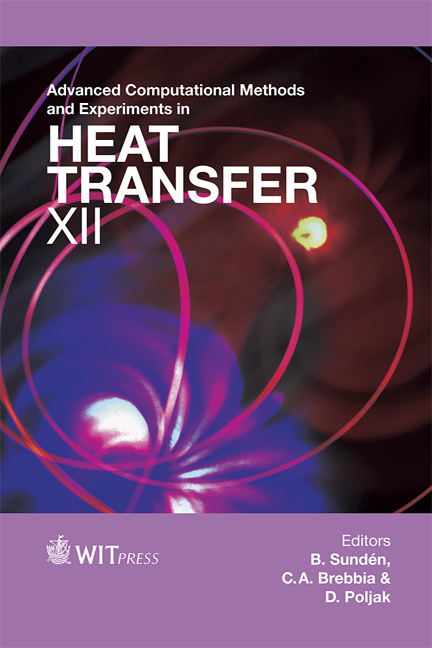Inverse Determination Of The Heat Transfer Coefficient Distribution On A Steel Plate Cooled By A Water Spray Nozzle
Price
Free (open access)
Transaction
Volume
75
Pages
11
Page Range
345 - 355
Published
2012
Size
530 kb
Paper DOI
10.2495/HT120301
Copyright
WIT Press
Author(s)
A. Cebo-Rudnicka, Z. Malinowski, T. Telejko & J. Gielzecki
Abstract
Water spray cooling plays an important role in the steel industry. Continuous casting lines are equipped with the system of water spray nozzles installed in the secondary cooling zones. In the hot rolling mills the spray or laminar cooling systems are employed to reduce the strip temperature before coiling. A suitable rate of cooling must be employed to ensure a proper temperature drop of the worked out material in order to achieve desired properties. Quality of the numerical simulations of the temperature field of the cooled object strongly depends on the thermal boundary conditions. In the literature only average or maximum values of the heat transfer coefficient while spray cooling are available. The experimental stand, numerical models and dedicated software have been developed to study the heat transfer coefficient distribution on the surface of the steel plate cooled by the water sprays. The steel plate is heated in the electric furnace up to the temperature of 907oC. Next, the hot plate is pushed to the cooling chamber and cooled by the water spray nozzle. The plate temperature has been measured by the 25 thermocouples. The measurements have been employed to determine the distribution of the heat transfer coefficient on the plate surface. The inverse method based on the three dimensional finite element model of the heat conduction in the plate has been employed. The finite element model is based on nonlinear shape function. The heat transfer coefficient varies significantly over the cooled surface of the plate and strongly depends on the plate temperature. Keywords: heat transfer coefficient, inverse method, spray cooling, three dimensional model.
Keywords
heat transfer coefficient, inverse method, spray cooling, three dimensional model.





